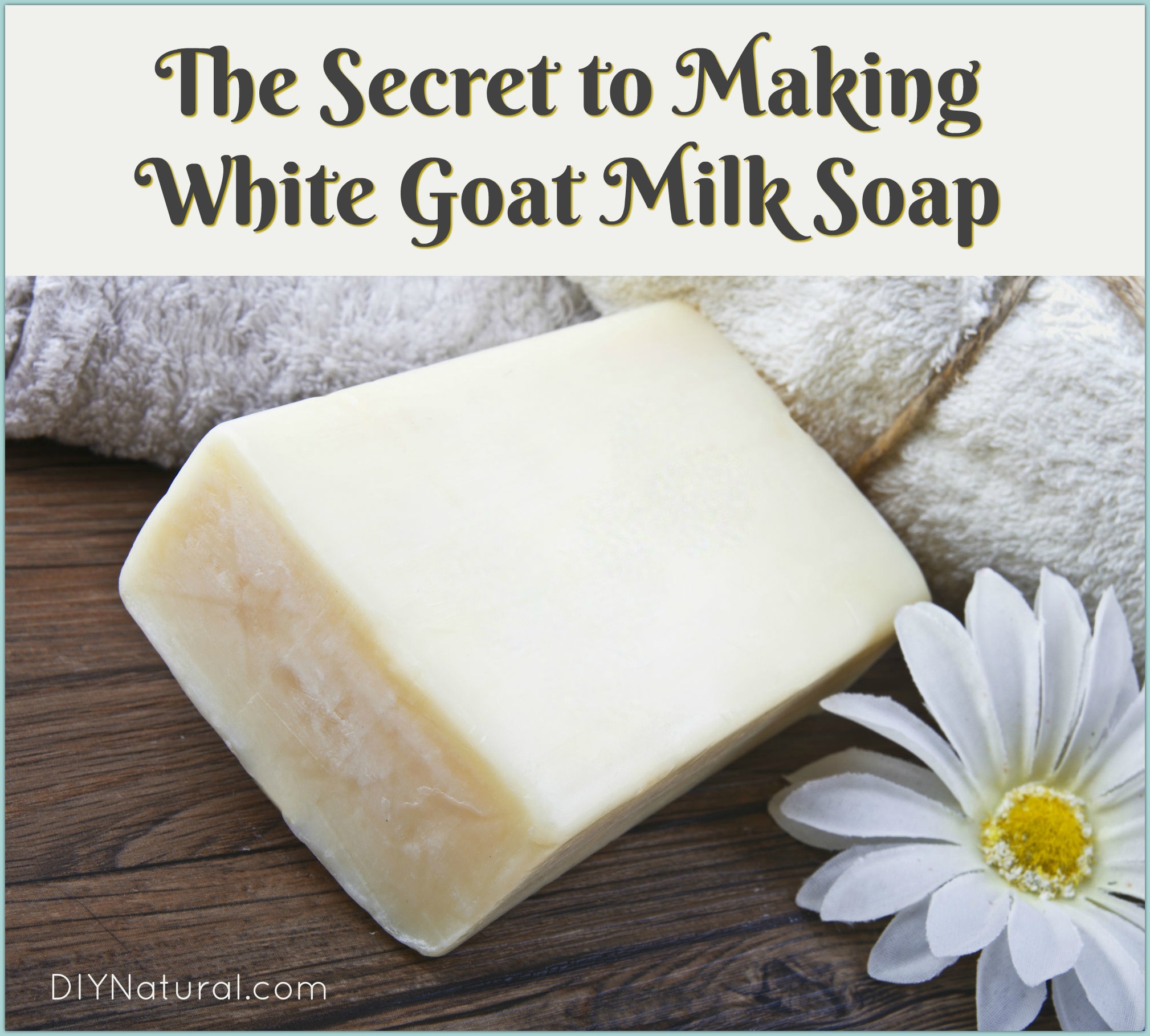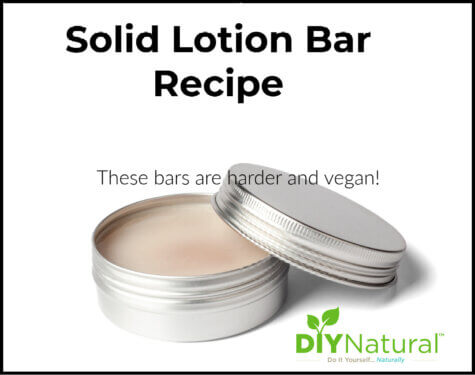
Learning to make goat milk soap white isn’t as easy as it sounds. But with a lot of practice, I have discovered the secret to making and keeping it white.
Note: Use our goat milk soap recipe and use the tips in this article to make it white.
Make Goat Milk Soap White
If I had my way, I’d do nothing but make soap all day. I’ve had fun with many different types of soap, but the one thing that keeps me scratching my head how to make goat milk soap white! With a lot of practice, I’ve come up with the secret.
For recipes and the process of making soap, check out the following articles:
Working With Goat’s Milk
There a few ways you can incorporate goat’s milk into your soap. The first way is easy: mix powdered goat’s milk with some oil (water makes it clump up) and add it at trace. This works, but the soap doesn’t turn out near as creamy or rich. So using pure goat’s milk is the preferred way to go.
However, if you make soap the way it’s normally done, you’ll scorch your milk with the high temperatures from the lye. I’ve tried using an ice bath around the milk to keep it cool. This works to some extent, but it still needed more tweaking.
Preparing Goat’s Milk for Use in Soap
Your goat’s milk needs to be frozen to the point of being slushy. If you’ve ever made granita, the process is similar.
- First, clear a space in your freezer the size of a cake pan. Then, pour your goat’s milk into the pan and freeze about an hour. You want it kind of slushy, but not solid.
- Take a fork and “fluff” the milk by raking the fork over it. Freeze for another hour and repeat the same process. It should be like flakes of ice, not one solid piece.
- Place the frozen goat’s milk in a bowl (stainless steel or glass is best) and place this in a dishpan Surround the bowl with ice and add water. This will keep it super cold. Now it’s ready for the next step.
Working With Lye
You’ll want to weigh your lye, then set it aside. I put mine into an up-cycled candy shaker bottle to keep it dry. Shake a small amount of lye over the frozen milk and carefully work it in, being careful not to splash it. (I alternately use a spoon and a potato masher for this.)
The secret is to wait for the frozen milk to completely cool back to 50°F-60°F after each addition of the lye before adding more. Heat causes “cooking” of the milk, so you want to keep it cool. Change out the ice and water as necessary to maintain this cool temperature.
Don’t Rush It
I usually have other projects going on, so I can add some lye, mix it in, and then go do something else for a while. It may take over an hour just to get the lye all incorporated. During that time you can get all of your oils ready and prepare soap molds.
Once fully incorporated, the goat’s milk will be considerably thicker. Goat’s milk naturally homogenizes itself, so unlike cow’s milk, where the cream rises to the top, it stays a creamy texture throughout. This fat that is part of the milk causes the milk to thicken, and the lye is starting to turn the fat into soap.
After all of your lye is mixed into your milk, it’s important to continue keeping it cold. Keep the ice bath going until you incorporate the milk/lye mixture into the oils.
Mixing and Pouring
Once the milk and lye is ready, you need to get the oils to within 10°F or so of the milk. If the milk is at 60°F then your oils should be at 70°F, or near there. It seems like a very low temperature to be mixing in oils, but milk-based soaps are different than other types.
Pour the milk/lye into the oils and start stirring by hand at first. Be sure to scrape the sides of the bowl as soap can start forming on the sides faster than the middle. Feel the bowl once in a while to be sure it’s not heating up. (The mixture will sometimes heat up on its own with cold process soap.)
After a few minutes, use a stick blender to bring it to a light trace. Add your essential oils now. Work it off and on to bring it to a full trace. It should be thick and creamy, but still pourable. Pour into molds and cover with a sheet of waxed paper. This will keep any dust, debris, or bugs out of it.
One Final Secret to Make Goat Milk Soap White
In soap making, there is a term called CPOP, which is Cold Process, Oven Process. It’s used in special cases when you want the soap to gel, so you force it in the oven on a low temperature. In this case, you need the soap to stay cool, so instead of placing the soap in the oven, place it in the refrigerator for the first 24 hours. (This makes it Cold Process, Refrigerator Process, or CPRP).
This step seems counterintuitive, but it works. By keeping the soap cool from the beginning all the way through the final step, it seems to work great. I’ve done it 3 times now and each time my soap came out a creamy white color.
Have you ever tried to make goat milk soap? If so, have you had trouble trying to make it white?
*******



Hello, Thank you for posting this recipe. My question is, on the recipe page it says temp at 110-125 and on this page 60 &70 deg. Just new to this soap making and need help , sorry if its a lame question. Thanks again.
I mix the powdered goats milk mixed with water and pour into ice cube trays and freeze. Then I use that as the water portion part of the recipe. I pour the lye over the frozen cubes and dissolve the lye . At 100-110 degrees I add to the oils. I have found keeping it in the refrigerator does help with goats milk soap. I love the creaminess of goats milk soap.